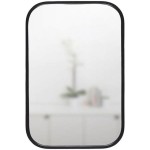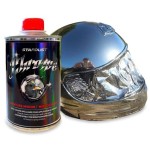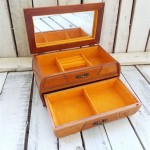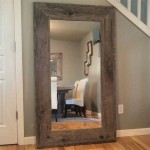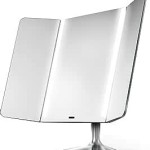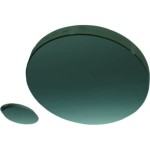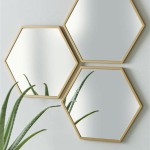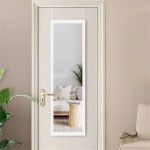Antique Dressing Table Mirrors: A Reflection of History and Style
Antique dressing table mirrors, also known as vanity mirrors, offer a glimpse into the past while adding a touch of elegance to modern interiors. More than just functional objects, they represent evolving tastes in design, materials, and craftsmanship across different eras. Understanding their history, styles, and key features can assist collectors and enthusiasts in appreciating and identifying these unique pieces.
Identifying Key Periods and Styles
Antique dressing table mirrors reflect the dominant design trends of their respective periods. Recognizing these styles is crucial for accurate identification and valuation.
Victorian Era (1837-1901): Victorian mirrors often feature ornate carvings, intricate details, and elaborate frames. Common motifs include flowers, leaves, scrolls, and cherubs. Materials ranged from mahogany and walnut to rosewood, often with inlaid mother-of-pearl or other decorative elements. Cheval mirrors and smaller vanity mirrors were popular during this period.
Art Nouveau (1890-1910): This style embraced flowing lines, organic shapes, and stylized floral patterns. Mirrors from this era often feature asymmetrical designs and incorporate materials like stained glass and metalwork alongside the wood frame.
Art Deco (1920-1939): Characterized by geometric shapes, bold colors, and streamlined designs, Art Deco mirrors offer a stark contrast to the elaborate styles of earlier periods. Materials like chrome, Bakelite, and mirrored glass were commonly used, creating a glamorous and modern aesthetic.
Mid-Century Modern (1945-1975): This period emphasized functionality and simplicity. Mirrors from this era often feature clean lines, minimal ornamentation, and the use of materials like teak, walnut, and brass. The designs reflect a shift towards a more casual and less formal style.
Construction and Materials
The construction and materials used in antique dressing table mirrors provide valuable clues to their age and authenticity. Examining these aspects closely helps distinguish genuine antiques from reproductions.
Wood: Different periods favored different wood types. Identifying the wood used can help narrow down the mirror's age. For example, mahogany was prevalent in the 18th and 19th centuries, while oak was common in earlier periods.
Glass: Older mirrors often exhibit slight imperfections or distortions in the glass due to the manufacturing processes of the time. This characteristic, sometimes referred to as "foxing" or "silvering loss," can be an indicator of age but should not be confused with damage.
Joinery: Examining the joinery techniques used in the frame construction can provide further evidence of the mirror's age. Hand-cut dovetails, for instance, are indicative of earlier periods, while machine-made joints suggest a later production date.
Assessing the Condition and Value
The condition of an antique dressing table mirror significantly impacts its value. Collectors prize pieces in original condition, while repairs and restorations can diminish value depending on their extent and quality.
Original Finish: Mirrors with their original finish intact are generally more valuable than those that have been refinished. Inspecting the finish for signs of wear, patching, or overpainting can provide insights into the mirror's history.
Mirror Plate: The condition of the mirror plate itself is a key factor. Minor imperfections like foxing may be acceptable, but significant damage, such as large cracks or extensive silvering loss, will detract from the value.
Hardware: Original hardware, such as handles, knobs, and decorative elements, adds to the authenticity and value of the mirror. Missing or replaced hardware can lower the overall value.
Caring for Antique Mirrors
Proper care and maintenance are essential for preserving the beauty and value of antique dressing table mirrors.
Cleaning: Clean the mirror frame with a soft, dry cloth. Avoid using harsh chemicals or abrasive cleaners, which can damage the finish. For the mirror plate, use a gentle glass cleaner and a soft cloth, avoiding excessive moisture.
Handling: Handle antique mirrors with care, supporting the frame and avoiding pressure on the mirror plate. When moving a mirror, ensure it is adequately protected with padding and appropriate packing materials.
Environment: Store or display antique mirrors in a stable environment, away from direct sunlight, excessive humidity, and extreme temperatures. These factors can damage the frame, the mirror plate, and the finish.
The Appeal of Antique Mirrors
Antique dressing table mirrors offer a unique blend of functionality and decorative appeal. They serve as a focal point in a room, adding character and a sense of history to any interior.
Investment Potential: Certain antique mirrors, especially those in excellent condition and from desirable periods, can appreciate in value over time. Collectors often seek out rare and unusual examples, making them a potential investment.
Incorporating Antique Mirrors into Modern Decor
Antique dressing table mirrors can be seamlessly integrated into various interior design styles, from traditional to contemporary. Their versatility allows them to complement different aesthetics and add a touch of timeless elegance.
Placement: Consider the size and style of the mirror when choosing its location. A large cheval mirror can make a statement in a bedroom or dressing room, while a smaller vanity mirror might be better suited for a bathroom or hallway.
By understanding the key characteristics of antique dressing table mirrors, collectors and enthusiasts can appreciate the craftsmanship and history embodied in these beautiful objects. Careful consideration of style, materials, condition, and care will ensure their preservation for generations to come.

The Penderyn Furniture Co Victorian Mahogany Dressing Table Swing Mirror

Antique Dressing Table Mirrors

Large Antique Dressing Table Mirror For At Pamono

Small Antique Dressing Table Mirror Toilet Georgian Oval Mirrors Cheval

Lovely Gilt Vintage Crested Triple Dressing Table Mirror Tables

Small Antique Dressing Table Mirror Swing Georgian Skeleton Top Mirrors Cheval Toilet

19th Century English Mahogany Dressing Table Mirror Mi7328906 Lorfords Antiques

Antique Dressing Table Mirrors

Tyzd881 1 Antique Dressing Makeup Table Wooden Dresser Set Drawer With Mir Home Decor Vintage Bedroom Furniture Mirrored

Early 18th Century Walnut Dressing Table Mirror Jane Short Antiques

